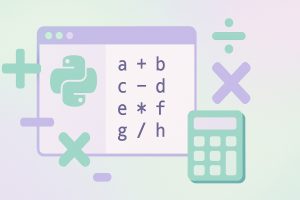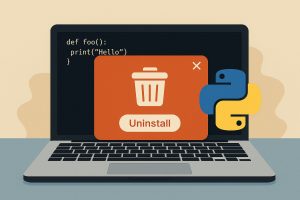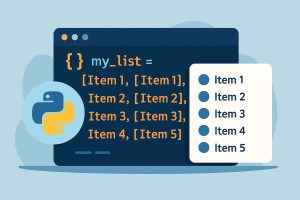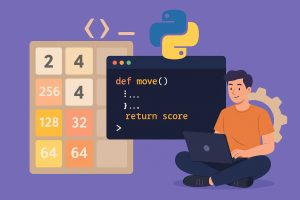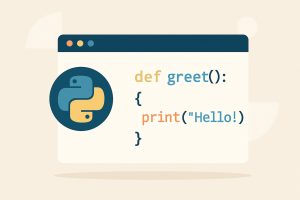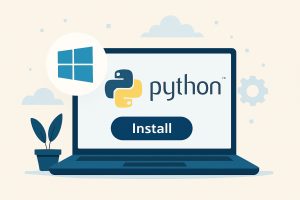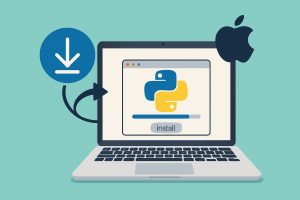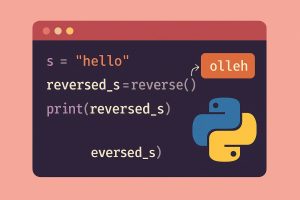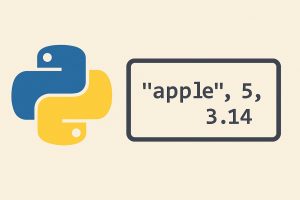Why simple calculators still matter in everyday coding Not every problem needs a complex solution. Sometimes, having a small script that handles simple math is more than enough. Whether it’s for a quick check, a classroom tool, or an automation step in a larger project, basic arithmetic scripts make life easier without adding overhead. Python …
Category: Python Basics
Master the fundamentals of Python programming with beginner-friendly tutorials. Learn syntax, data types, loops, functions, and best coding practices.
Jul 07
How to Uninstall Python
Understanding Why Python Might Need to Be Removed Sometimes, removing Python from a computer is necessary. It could be because the version is outdated, the installation is corrupted, or there’s a need to switch between multiple versions. For developers and casual users alike, knowing how to properly uninstall Python helps keep the system clean and …
Jul 04
How to Make a List in Python
Write better and more flexible code Python lists play a huge role in making programming more practical and efficient. Whether you’re collecting names, tracking inventory, or storing the results of a function, lists give you a way to organize data in one place. They’re flexible, easy to manage, and readable even for beginners. Working with …
Jun 30
Build the 2048 Game in Python from Scratch
Why Coding the 2048 Game Is a Great Starting Project Creating the 2048 game in Python offers a hands-on way to grasp core programming concepts while building something recognizable and fun. Unlike complex applications that require frameworks or advanced libraries, 2048 relies on simple logic and can be crafted with basic Python skills. This makes …
Jun 27
How to Call a Function in Python
Why calling functions shapes code flow Functions are reusable blocks of code. Calling them brings clarity by grouping related steps. When scripts grow, function calls prevent repetition and reduce errors. Imagine logging into an app. Instead of writing login steps everywhere, a single login() function call handles it. Anyone reading the code immediately knows where …
Jun 25
How to Install Python on Windows
Why Python Matters on Windows Many developers start on Windows machines. Python brings scripting, automation, and web development tools to familiar desktops. Having Python ready lets content creators run simple scripts for batch renaming or data cleanup. Businesses can automate reports without new infrastructure. Windows users often face missing-language gaps. Preinstalled software rarely includes Python. …
Jun 22
How to Round Up in Python
The Need for Rounding Up in Python When working with prices, measurements, or timers, exact decimals can get messy. Many tasks demand whole numbers. Rounding up keeps values safe from undershooting needs. For example, billing by the hour uses upward rounding so labor isn’t undercharged. Python offers built-in ways to bump numbers to the next …
Jun 20
How to Install Python on Mac
Preparing Your Mac for Python Getting Python set up makes building apps and running scripts smooth. A Mac often comes with an older Python version preinstalled. Updating to the latest release unlocks new features and security fixes. Checking existing installations helps avoid conflicts. Open Terminal and type python3 –version. If a version number appears, a …
Jun 17
How to Reverse a String in Python
Simple slicing for reversal Reversing text often appears in puzzles or data processing tasks. Python’s slicing makes it easy: using text[::-1] flips the string. This simple slice reads from end to start, stepping backward by one. This approach works with any string length. For example, “hello” becomes “olleh”. No loops or extra libraries required—just built-in …
Jun 12
Understanding a Tuple in Python
The importance of fixed-size collections When storing values that shouldn’t change, tuples provide a reliable container. Unlike lists, tuples prevent accidental updates, making data integrity easier to enforce. For example, storing a set of coordinates as a tuple ensures those values remain constant throughout program flow without extra checks. Tuples often represent records with mixed …

